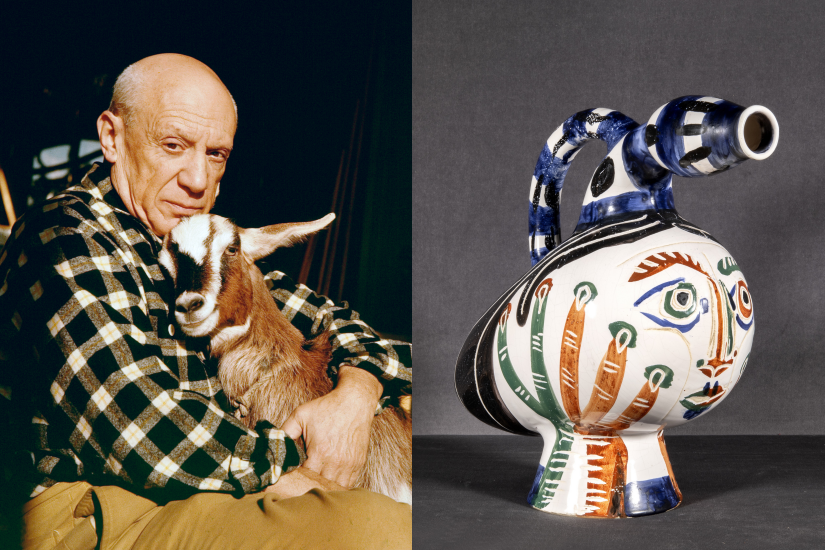As Art Month approaches, a wave of large-scale events is coming, and the private sales department of Phillips, PhillipsX, is presenting the auction exhibition “The Animal Kingdom of Picasso,” inviting everyone to explore the story of artistic master Pablo Picasso and his animal muses.
This major representative of 20th-century modern art is known for the diversity of his artistic practice — from the profound melancholy of his Blue Period to the fractals of Cubism, and the lyricism of Neoclassicism to the distortions of wartime portraiture. Throughout his 70-year artistic career, he created many different techniques; his endless love and deep exploration of animal subjects serve as a consistent thread within these shifting styles.
Animals not only serve as subjects for depiction but also appear as recurring symbols, muses, and metaphors in the artist’s oeuvre. The works present whimsical and humorous portrayals of animal personalities, along with profound reflections on the relationships between humans and animals, showcasing a clear fascination with the mysterious powers of animals. This exhibition features a variety of animal artworks, including owls, ducks, pigeons, monkeys, dogs, and goats, and encompasses various media such as painting, paper art, sculpture, ceramics, and limited edition prints, highlighting Picasso’s remarkable ability to capture the essence of animals and the wild world he created.
Highlight of the exhibit 1:
《Duck Vase》
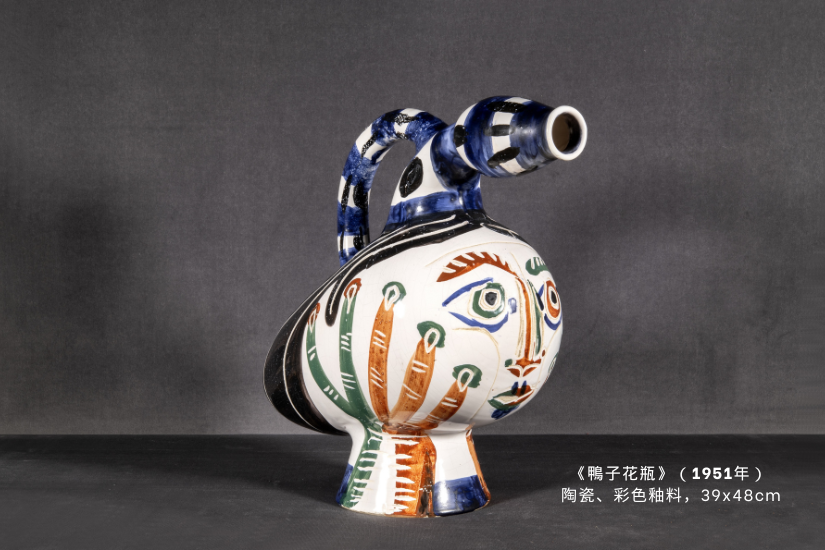
One of the highlights of this ceramic presentation is the “Duck Vase,” created in 1951, which perfectly blends animal and human forms. The shape of the vessel resembles a duck, yet incorporates a woman’s face and hands, making the creation all the more vivid. This inspiration stemmed from the artist’s partner at the time, Françoise Gilot.
Picasso combined black clay glaze and engraving techniques to depict Gilot’s wavy hair and delicate facial features with fluid lines, bringing the artwork to life. The back of the piece features six holes, hinting at its potential use as a vase. This work embodies Picasso’s ability to infuse ceramic art with vitality through pencil and paint, capturing a lively duck with expressive and minimalist lines.
Exhibit Highlight 2:
“The Horseback Riding Naked Youth”
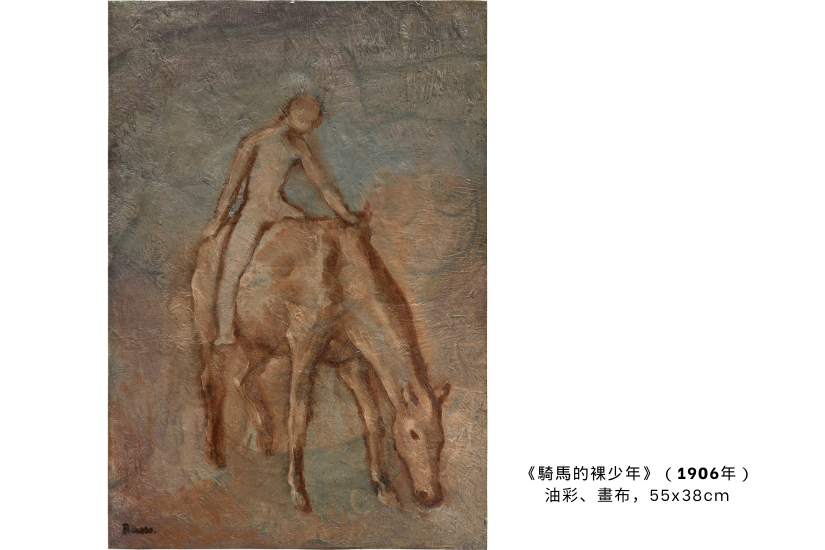
“Boy with a Horse,” created in 1906, is one of the rare works by Picasso from his Rose Period. During this time, Picasso predominantly used warm colors like orange and pink, showing an increasing interest in classical forms, resulting in works that are warm and tender. Notably, this piece is thought to be connected to the artist’s grand and solemn painting “The Bathers,” which he explored multiple times yet never completed (the drawing currently held at the Metropolitan Museum of Art in New York is the closest to a complete composition), further highlighting its significance.
“Riding Boy” is one of the only two oil paintings related to its theme and the only one still remaining in private collection. Additionally, recent research suggests that beneath its surface lies an early Blue Period work, indicating that Picasso demonstrated innovation with the canvas early in his artistic career and providing new insights into his evolving creative process.
Exhibit Highlight 3:
“Spring Water, Women, and Dogs”
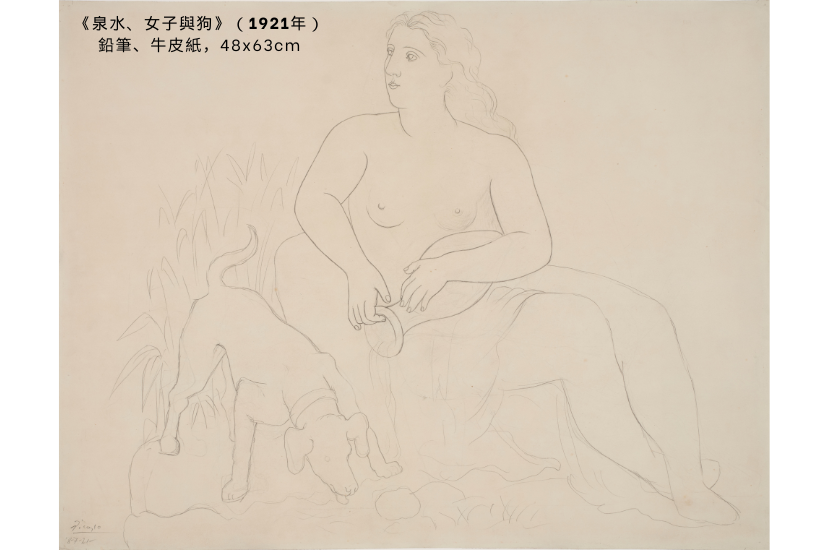
The pencil drawing “Fountain, Woman, and Dog,” created in 1921, reflects Picasso’s return to classicism after World War I and was once included in the collection of the Museum of Modern Art (MoMA) in New York. In Picasso’s works, dogs symbolize companionship, loyalty, and instinct; he often depicts this beloved animal friend of humanity in a whimsical manner.
In the image, a seated woman is pouring water for her accompanying dog while simultaneously nourishing the river. Picasso’s delicate and confident lines give the scene a sculptural quality, emphasizing the quiet and profound companionship and connection between them.
Exhibit Highlight 4:
“Women and Monkeys”
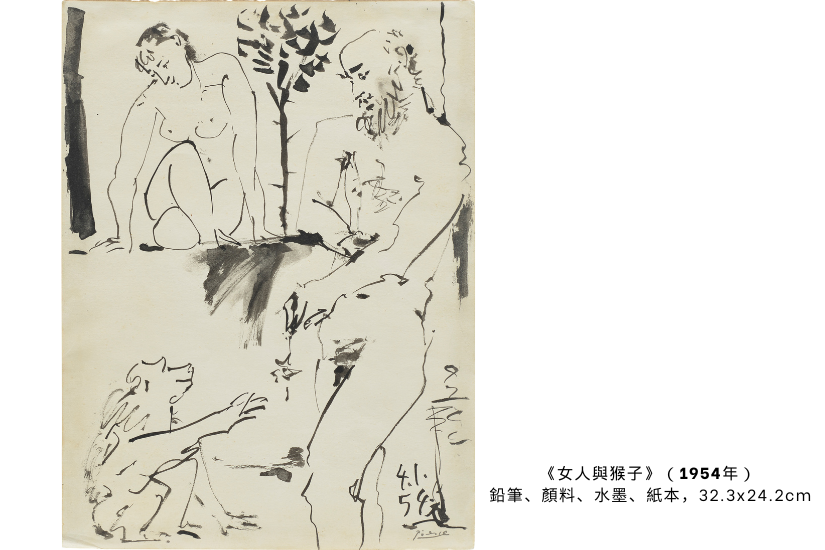
“The Woman and the Monkey,” created in 1954, showcases Picasso’s exquisite skill in utilizing ink and paint on paper. The piece powerfully demonstrates his ability to depict the tender interactions between humans and animals while also addressing the tension and harmony in their relationships, thus reflecting themes of playfulness, intelligence, and intimacy, with a monkey portrayed in the artwork.
Exhibit Highlight 5:
“The Bull”
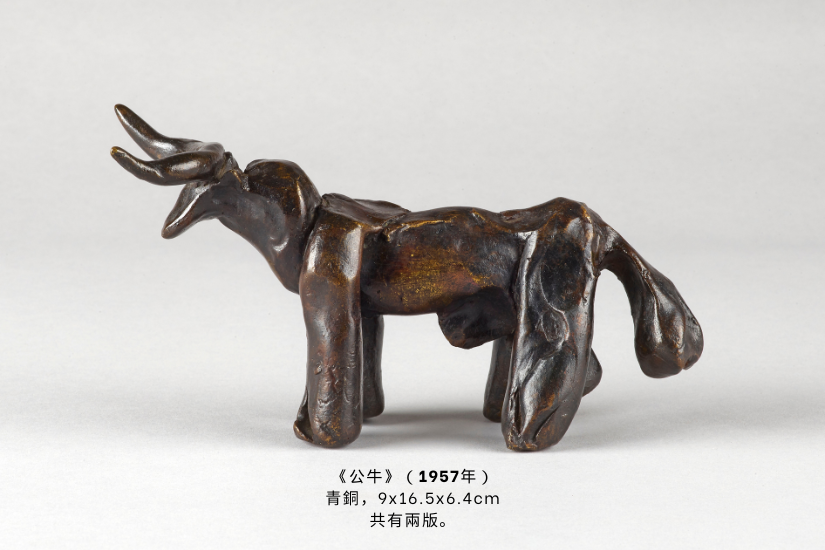
In Picasso’s works, few themes exude as much passion and sensual allure as the bull. The image of the bull merges classical mythology with the artist’s Spanish heritage. The bulls in his works display masculinity, serving as a powerful and ever-evolving symbol, embodying the tension between charm and wildness. The bronze sculpture “Bull,” created in 1957, is one of two editions in which Picasso reshaped the concept of the animal through the manipulation and reworking of raw materials, abstracting it until the characteristics of the bull are distilled into a minimalist form; in this process, Picasso also crystallized mythology, history, and identity into his unique and timeless signature.
The Animal Kingdom of Picasso
Date: March 13, 2025 – April 15, 2025
Time: March 13 to 30 (11 AM – 7 PM) | April 1 to 15 (10 AM – 6 PM)
Location: Freespace Headquarters, 3rd Floor, West Kowloon Cultural District Authority Building, 8 West Kowloon Cultural District, Kowloon, Hong Kong

